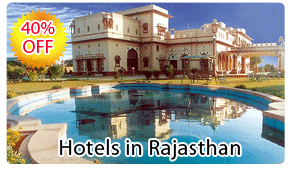
- perfectholidaytravel@hotmail.com
- +91 9811138106 / 9811 5939 89
Rajasthani Cuisine

Rarely has the world seen so rich a cuisine from so little that was available from the land. Ehile the eastern region of the set has fertile soil capable of crops of everything from wheat and maize to millets and corn, for much part the desert's dry terrain, prone to droughts, was incapable of producing even basic necessities of survival.
Picnic Food
Jaipur many be known the world over for its impressive Hawa Mahal and the fortifield old city of Amber but connoisseurs recognise it for another speciality dall bati choorma > This cuisine owes its origin to the Jaipuri penchant for picnicking in tyhe rainy season when the surrounding hills turn lush. On such occasions the picnic meal almost invariable consisted of dall bati choorma usully cooked on site rather that carried in a hamper.
An important feature of non-vegetarian cooking is the Rajput kitchen was that it weas rarely cooked on the main stove in the kitchen and usually employed the male head of the family as its chef.
Regional Specialties
If jaipur has its specialty none of the other princely states have lagged behind. Bikaner has its savouries especially bhujiya, which has accounted for its fame and the quality of its papads and badi remains unrivalled, The lean mutton of the desert goats of this region too is considered the most favourable Jodhpur has its kachoris puffed breads with stuffing those with mawa being extraordinarily sweet while others have biting hot green chillies laced with a masala that is also intended to singe the palate.
Shikhar in Rajasthan
Till the time of independence,m hunting expeditions or shikar where organised with fanfare, At the top of the heap was simply the thrill of bagging tiger or panther, mounting another trophy on the wall. Srummers and beaters would round up the jungle's beasts as they marched towards the machan, the raised platform where the hunters sat, their guns ready.
Foreign Influences On Rajasthan Food
The Royal families, alone could claim some degree of variety in their meals because of the influence, first, of the Mughal court, and later the English, Mughal cuisine was varied and lavish and used the huge variety of ingredients at its disposal, all of which was harder to come by in the desert, even in the erstwhile palaces.
The British influence was to formalise the manner in which the meal was eaten at the table and to make the Rajasthani dishes somewhat more bland. Over the years however, even this Indianised somewhat, with stews and bakes and roasts including Indian spices, so the peculiar Anglo Indian cuisine of the pqalace too created an all too distinctive cuisine.










